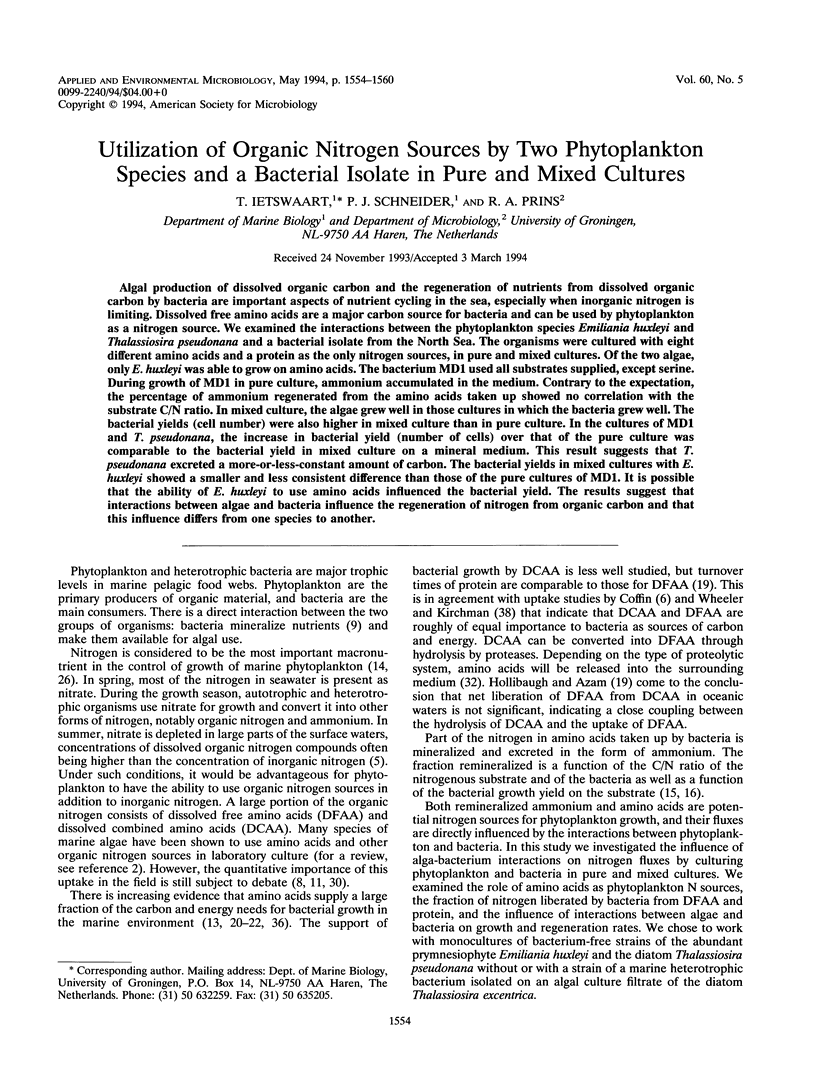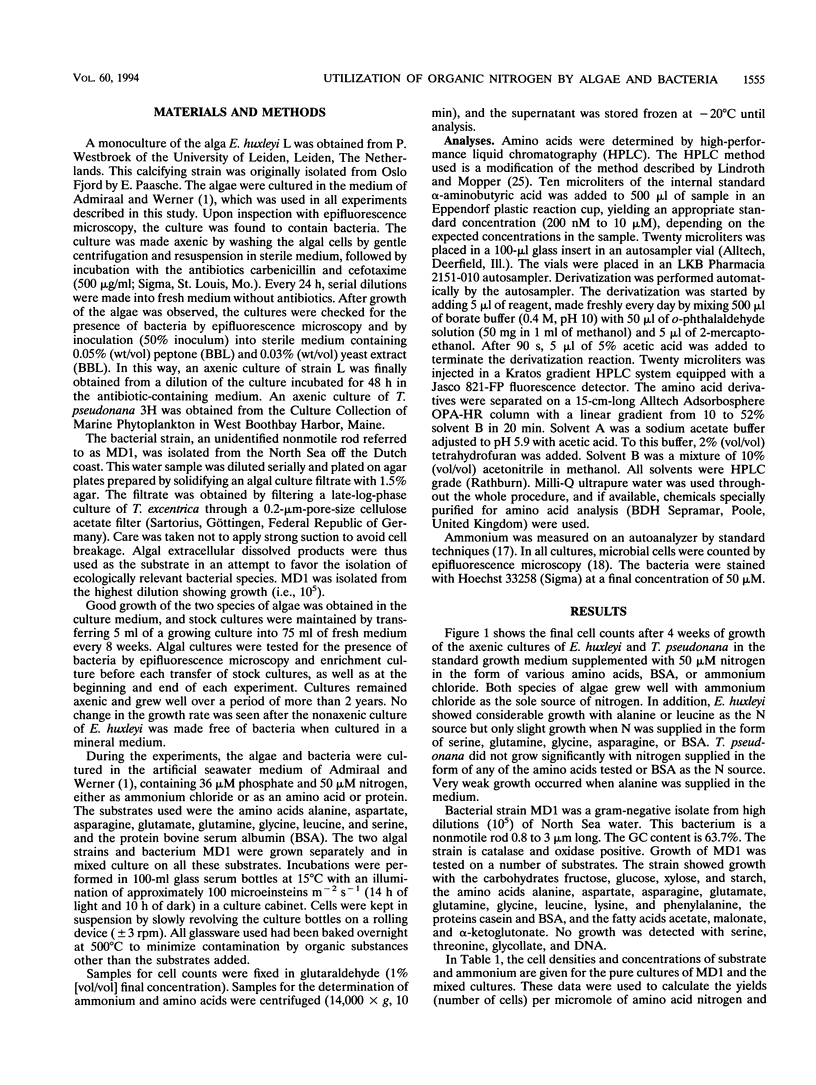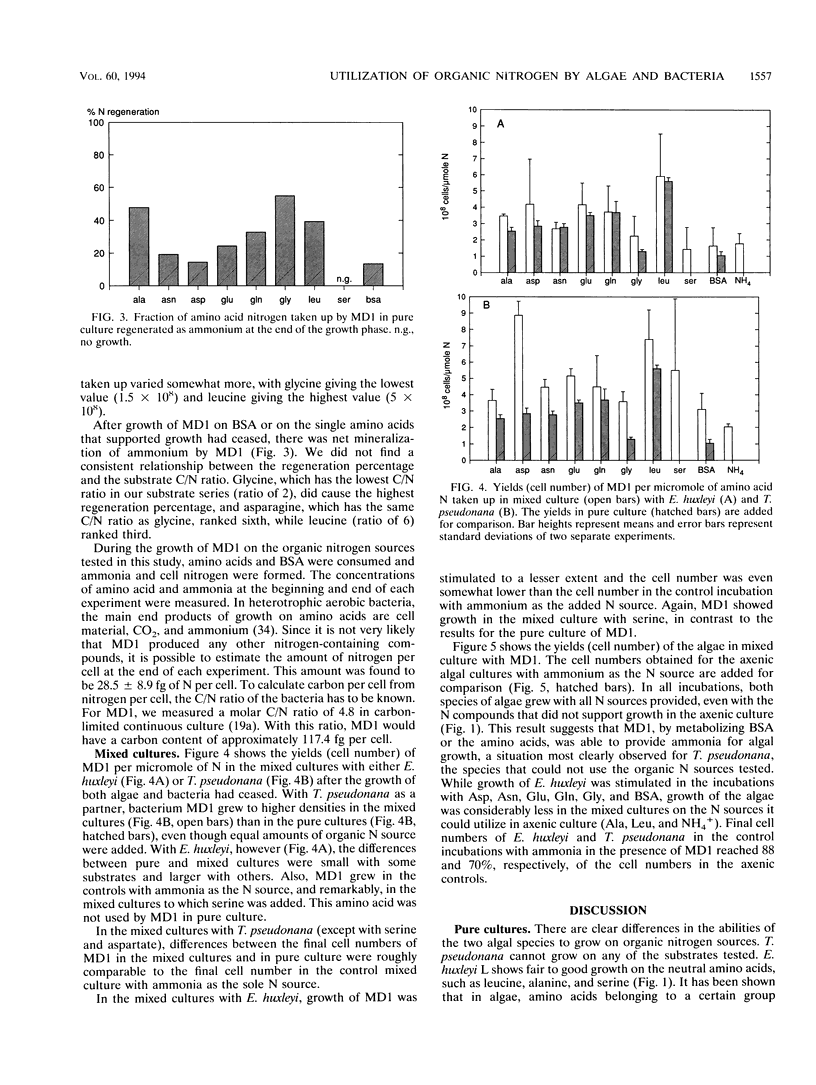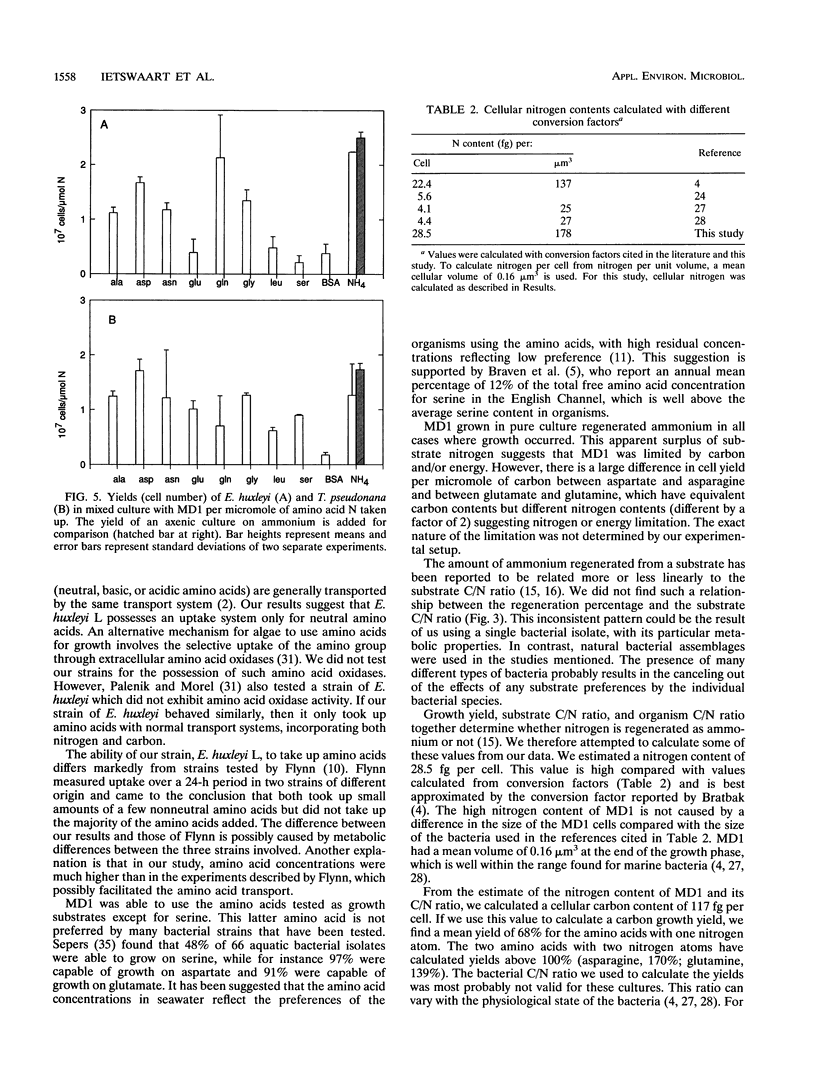Abstract
Algal production of dissolved organic carbon and the regeneration of nutrients from dissolved organic carbon by bacteria are important aspects of nutrient cycling in the sea, especially when inorganic nitrogen is limiting. Dissolved free amino acids are a major carbon source for bacteria and can be used by phytoplankton as a nitrogen source. We examined the interactions between the phytoplankton species Emiliania huxleyi and Thalassiosira pseudonana and a bacterial isolate from the North Sea. The organisms were cultured with eight different amino acids and a protein as the only nitrogen sources, in pure and mixed cultures. Of the two algae, only E. huxleyi was able to grow on amino acids. The bacterium MD1 used all substrates supplied, except serine. During growth of MD1 in pure culture, ammonium accumulated in the medium. Contrary to the expectation, the percentage of ammonium regenerated from the amino acids taken up showed no correlation with the substrate C/N ratio. In mixed culture, the algae grew well in those cultures in which the bacteria grew well. The bacterial yields (cell number) were also higher in mixed culture than in pure culture. In the cultures of MD1 and T. pseudonana, the increase in bacterial yield (number of cells) over that of the pure culture was comparable to the bacterial yield in mixed culture on a mineral medium. This result suggests that T. pseudonana excreted a more-or-less-constant amount of carbon. The bacterial yields in mixed cultures with E. huxleyi showed a smaller and less consistent difference than those of the pure cultures of MD1. It is possible that the ability of E. huxleyi to use amino acids influenced the bacterial yield. The results suggest that interactions between algae and bacteria influence the regeneration of nitrogen from organic carbon and that this influence differs from one species to another.
Full text
PDF






Selected References
These references are in PubMed. This may not be the complete list of references from this article.
- Bratbak G. Bacterial biovolume and biomass estimations. Appl Environ Microbiol. 1985 Jun;49(6):1488–1493. doi: 10.1128/aem.49.6.1488-1493.1985. [DOI] [PMC free article] [PubMed] [Google Scholar]
- Ducklow H. W., Purdie D. A., Williams P. J., Davies J. M. Bacterioplankton: a sink for carbon in a coastal marine plankton community. Science. 1986 May 16;232(4752):865–867. doi: 10.1126/science.232.4752.865. [DOI] [PubMed] [Google Scholar]
- Hobbie J. E., Daley R. J., Jasper S. Use of nuclepore filters for counting bacteria by fluorescence microscopy. Appl Environ Microbiol. 1977 May;33(5):1225–1228. doi: 10.1128/aem.33.5.1225-1228.1977. [DOI] [PMC free article] [PubMed] [Google Scholar]
- Lee S., Fuhrman J. A. Relationships between Biovolume and Biomass of Naturally Derived Marine Bacterioplankton. Appl Environ Microbiol. 1987 Jun;53(6):1298–1303. doi: 10.1128/aem.53.6.1298-1303.1987. [DOI] [PMC free article] [PubMed] [Google Scholar]
- Nagata T. Carbon and nitrogen content of natural planktonic bacteria. Appl Environ Microbiol. 1986 Jul;52(1):28–32. doi: 10.1128/aem.52.1.28-32.1986. [DOI] [PMC free article] [PubMed] [Google Scholar]
- Nagata T., Watanabe Y. Carbon- and Nitrogen-to-Volume Ratios of Bacterioplankton Grown under Different Nutritional Conditions. Appl Environ Microbiol. 1990 May;56(5):1303–1309. doi: 10.1128/aem.56.5.1303-1309.1990. [DOI] [PMC free article] [PubMed] [Google Scholar]
- Paerl H. W. Ecophysiological and trophic implications of light-stimulated amino Acid utilization in marine picoplankton. Appl Environ Microbiol. 1991 Feb;57(2):473–479. doi: 10.1128/aem.57.2.473-479.1991. [DOI] [PMC free article] [PubMed] [Google Scholar]


